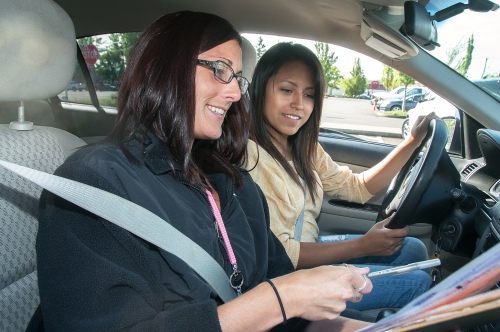
Any driving instructor will be familiar with the same question murmured by the learner driver clutching the steering wheel next to them; “How hard is the driving test?”
The Driver and Vehicle Standards Agency (DVSA) administers the driving test and training schemes in Great Britain. There has been a long-running debate over whether or not the theory and practical tests are fit for purpose, and reports have suggested that radical changes to the system could be in the pipeline.
Theory tests
The pass rates for the written theory test remain low, with an average of 50.7% in the second quarter of 2014 - a decrease of 1.5% compared to the corresponding period last year, according to figures published by the Department for Transport (DfT).
The fall in pass rates may be down to changes to the test questions made in January 2013, which were aimed at asking more complex questions to ensure drivers were tested on every possible situation. This decrease could equally be a consequence of the withdrawal of translators for foreign language tests from April 2014.
Yet this isn’t deterring people from trying to earn a driving licence, with a 7.7% increase in the amount of theory tests being taken compared to 2013, which indicates that people may be persevering and taking retests until they get it right.
Practical Tests
There were 360,581 car practical tests taken in April to June 2014 - up by 1.5% on last year.
Pass rates were down by 0.3 percentage points on 2013, with 50.7% of men successfully passing their tests. This figure stood at just 43.7% for women. The DfT said these were typical of the UK’s overall pass rates since early 2009.
Clearly, there has been a drop in the number of candidates passing their tests, so it is easy to assume that it is getting harder, although we must remember that this is only based on data from one quarter. It’s important that we monitor pass rate fluctuations in the coming months in order to identify any longer-term trends.
Young drivers
Naturally, most driving instructors will work predominantly with young learner motorists. Some road safety campaigners have argued that 17 to 18-year-olds need to be tested more rigorously before they are allowed out on the roads alone.
Statistics show that drivers aged between 17 and 24 are at a much higher risk of crashing than their older counterparts, and although 17 to 19-year-olds make up just 1.5% of the nation’s licence holders, studies conducted by the Transport Research Laboratory show they are involved in 12% of serious and fatal crashes.
As such, it’s no surprise that the government is under increasing pressure to overhaul the driving test system for younger people, and some groups have called for measures such as a restriction on the number of passengers young motorists can carry and a curfew on night-time driving.
It’s hard to say if the driving test is more difficult than in previous generations, but we’d probably be safe to assume that it will become much harder in the future.
If you’re looking for driving school insurance, get in touch with C&A Mackie today.
Comments
Go to blog index
